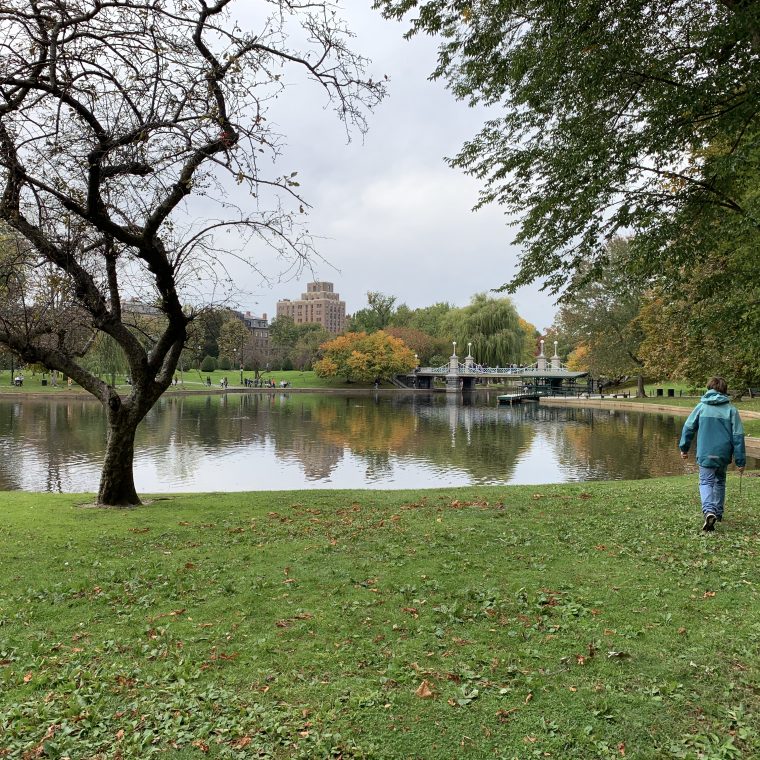The last of our Boston trip… That picturesque little bridge is in the Public Garden. As far as I can tell it doesn’t have a name, which is fitting, since it is described in some places as the “world’s shortest suspension bridge.” I don’t know if there are any shorter suspension bridges or how to go about finding that out, but I will say that description is somehow a very Boston one. Unfortunately, it’s not true.
Because it’s so picturesque – am I committing a bridge faux pas if I describe it as cute? – I wanted to take pictures of it, so I worked my way around to the side of one abutment. Here’s a nice view:

Eyebar-chain suspension bridges are generally a mid-1800s phenomenon in the US, before the Roeblings showed what could be done with spun-in-place wire cables. On one hand, a small decorative bridge like this might use an obsolete structural form, so it could be later. On the other hand, even in a conservative city, those granite piers look very Civil-War-era. That kind of date would mean that the chains are wrought iron, which fits well with the decorative handrail.
I was mildly bothered by the rough concrete of the deck edge, which is obviously a later alteration. Then I walked about ten feet more to the left and saw this:

Those are steel wide-flange beams supporting a reinforced-concrete deck. The beams are partly encased in concrete cast integrally with the deck. This is twentieth-century construction, with the encasement suggesting the first half of the century. Further, the beams are large enough to carry pedestrian loading the short distance between the piers, which means the chains are for show rather than structure.
So I started looking around. HAER has some nice photographs, all late 1900s and, unsurprisingly, none that show the deck underside. The concrete edge of deck is visible. There’s no text other than photo captions. The NRHP nomination form for the Garden has some history – the Garden as a whole dates from 1839 but wasn’t landscaped until the 1860s – but doesn’t give the construction date for the bridge or a physical description other than “iron and stone.” Bridgehunter gives the terse “Built 1867. Suspension rendered decorative with addition of girders in 1921.” That sounds right for both dates; if I was doing real research I’d go looking for documented sources, but this is good enough to satisfy my curiosity.
The original deck was wood, presumably supported by wrought-iron beams spanning laterally, chain to chain. Maybe it can be restored to that configuration some day.




You must be logged in to post a comment.